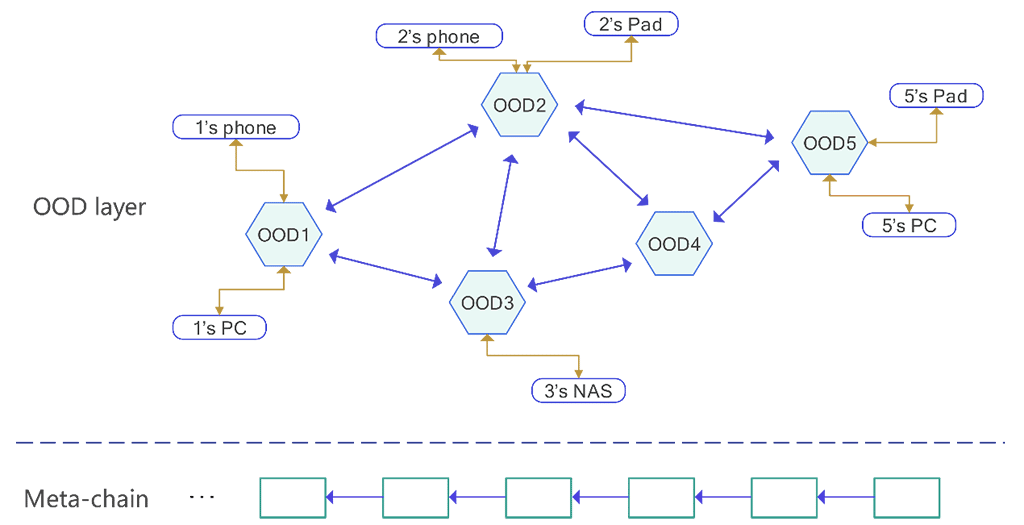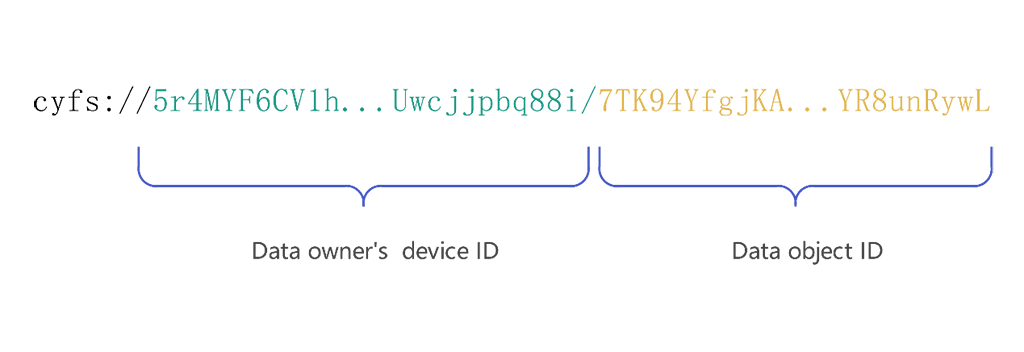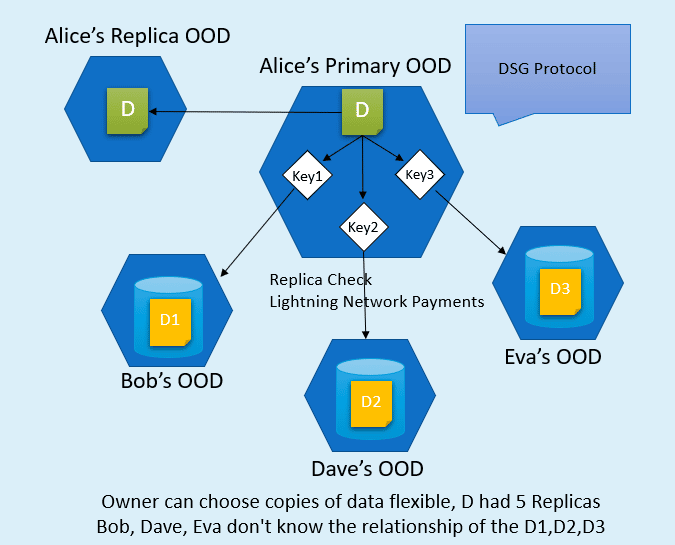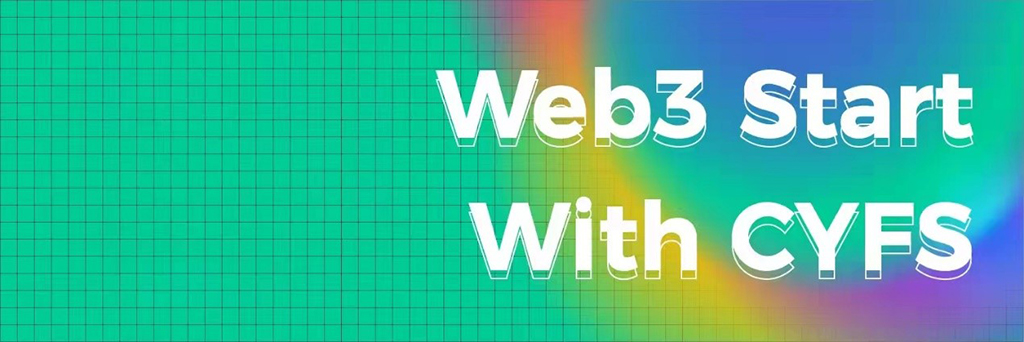What Is CYFS
Decentralized systems have evolved over 14 years since Bitcoin was invented in 2008. If BTC is the first generation of decentralized systems, bringing the idea of decentralization to mankind, then Ethereum is the second generation. From the earliest ICO to the current DeFi, Ethereum has successfully achieved the decentralization of finance and brought about the prosperity of Web3. It seems that mankind will soon realize the revolution of Web2.
However, if you look at it calmly, you will see that the NFT files are still stored on centralized databases; DAO projects are finally becoming “**Fi”s; various Web3 applications themselves are still centralized Web2 Apps and are not actually used by the public.
The fundamental reason is that the blockchain itself has its technical bottleneck and cannot host Web3 Apps. If we want Web3, there must be breakthroughs in infrastructure technology.
Therefore, we have been working hard to develop the new generation of decentralized infrastructure technology since 2016. This is much more difficult than making an applicationt with a lot of technical challenges to overcome. But we believe that such a new technology is the foundation of Web3, and it is worth our struggle for it. After years of research and development, finally we can proudly announce that we have solved all technical challenges and bring you a brand new next-generation Web3 technology – CYFS.
How CYFS Build Web3
The core of Web3 is complete decentralization of web, let’s see what CYFS can do:
Your data is your asset
In Web2, all user data belong to the application operators, while in CYFS, all data you generate , texts, pictures, comments, chat records, code commits, etc, are all NFTs and your assets. You own them and can profit from them.
Freely publish your contents
The content published in Web2 can be deleted by application operators at any time, which is completely unreliable. In CYFS, you can use a content-oriented, immutable cyfs:// to publish your content and let others access it with no latency. The process is completely decentralized and no one can remove or retrict your content. In this way, CYFS guarantees everyone the right to publish content equally on the web.
Contents be cross-app
Web2 is app-centric while CYFS is content-centric through cyfs://. Your content can be referenced by all CYFS apps as long as you publish it once. In this way, we achieved the idea“Semantic Web as web3” proposed by Tim Berners-Lee in 1998. Semantic Web will reshape the underlying logic of web.
Freely run your App
Applications on CYFS are also completely decentralized. Your app, like your data, is only under your control and cannot be shut down or changed functions by others. Developers have the right to publish and update applications, and users have the right to use them permanently.
Freely sell your storage space
In CYFS, computing resources are also decentralized. You are free to sell your spare storage space to let others backup their data and profit from it.
Completely decentralized DAO Application
The current DAO projects are all Web2 application + blockchain, which is not the real Web3. In CYFS, a completely decentralized DAO Application can be built with no centralized servers.
How CYFS made it
I believe that you must have been very excited after reading the capabilities of CYFS and want to know how CYFS made it. Below we will briefly share with you the key innovations of CYFS.
OOD
One of the most critical innovations is that we allow each user to enter the CYFS network with their own OOD (Owner Online Service), which is the fundamental guarantee of decentralization. OOD can store your data and do computing for you. you control it with your private key, and in this way, you truly own your data and your Apps.
In addition, we have a blockchain called meta-chain in CYFS. The structure is as below:

Blockchain as DNS
Another key innovation we use blockchain as DNS instead of DHT. Now decentralized storage projects on the market all use DHT (such as IPFS), but it cannot work in practice. the most essential problem of DHT is that one retrieval needs hundreds of nodes to participate, the network cannot function properly without incentives. Also, the retrieval takes too long.
So we creatively use blockchain to do DNS. Our cyfs link contains two segments, the first segment is your device ID (the unique identifier of your OOD), and the second segment is the object ID of the data (the Hash value of the data).

Then As long as you publish “‘your deviceID’: ‘latest info of your OOD’” on our meta-chain, others can get it from the meta-chain through the device ID, and connect to your OOD to request data. Problem solved! The entire process only needs one request, which is the same latency as the centralized application, with no one can interfere. As long as you ensure that your OOD is online, anyone can see your content.
DSG protocol
If you are worried about the risk of data loss in a single OOD, you can use a multi-OOD cluster to perform multiple backups of data. Also, you can use our DSG protocol to pay some fees to encrypt and backup important data on other user OODs. The DSG protocol can protect the rights of both parties, allowing everyone to freely buy and sell storage resources. As long as you pay enough cost, your cyfs link will never 404.

BDT protocol
CYFS also designed the BDT protocol to specifically solve the difficulties of large-scale distribution of data in a P2P network, for example, in social media or online group chat scenes.
We have done so much work, just hope that cyfs:// is actually usable in real world, and able to replace http://. cyfs:// will create a new Web.
DEC App
Smart contracts have performance bottlenecks, and it is impossible to use blockchain to do all application computings. In order to build a completely decentralized DAO application, we developed DEC (Data Exchange Contract) to let DAO members verify calculation results of other members offchain.
Core developing team
The key members of the CYFS core developing team are senior engineers/architects from XNET (NASQ). The team has 13 years of engineering experience in network protocols and P2P systems. After leaving XNET in 2016, the team focused on exploring next-generation Web3 technology.
CYFS near-term roadmap
After years of development, we have achieved industrial-level implementation of all above contents, and open sourced all core codes on Github. Our near-term roadmap is as follows:
Phase1: Publish CYFS White Paper core code of CYFS on Github(Jun 25-July 10)
Phase2: Start our ecosystem applications built on CYFS:
- Web3 Storage Lab(decentralized storage of your data and making money)
- CodeDAO(decentralized git hosting platform and running open source project with DAOs)
- OOD selling and storage mining
Phase3: CYFS mainnet goes online
CYFS needs everyone’s joint efforts and more resources to make it grow fast. For developers all over the world who are committed to Web3, whether you are infrastructure protocol developers, decentralized application developers, free software contributors, or AI developers, we need your passion and your strength. Please join us, let’s build the bright future of Web3 together.
You can follow us here: Website, Discord, Twitter, GitHub.
Subscribe to our telegram channel. Join


